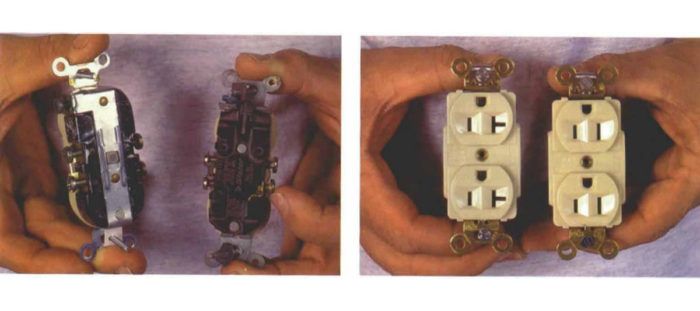Innovative Deck Railings
Using wood, glass, and steel to build deck railings that stand out from the crowd.

Synopsis: This article explores a number of railing options for exterior decks, including glass panels, cable, and rails with built-in lights. A useful sidebar describes code requirements.
One of the first decks I ever built didn’t have a railing. Technically, it didn’t need one because it wasn’t high off the ground and didn’t have stairs, but something about it always felt wrong to me. The deck looked exposed and incomplete, but I could never persuade the owners to add that railing. Maybe they thought I was looking for more work.
Not long ago, I drove by this same house, which had been bought and sold a couple of times since I worked on it. The first thing I noticed was a new deck railing on my old deck, and I realized that my intuition had been right. Although the railing itself was unremarkable, it added a real sense of completion and security to the deck. Perhaps the new owners had small children; certainly the railing would help to keep babies on board. At any rate, the deck now seemed more a part of the house rather than an afterthought.
Good rail design begins with building codes and common sense
In most areas, local building codes establish guidelines for rail safety. Most local codes follow the national codes such as BOCA or UBC, and their guidelines are easy to follow.
But building codes establish only minimum guidelines. Often, common sense—or intuition—is a more reliable guide. For example, Scott Schuttner, author of Building and Designing Decks (The Taunton Press, 1993), recommends some type of rail whenever one can fall more than the actual thickness of the deck framing. A short rail or bench can help to establish a boundary between different levels without being intrusive. Schuttner also recommends a 42-in. rather than a 36-in. rail for decks that are high off the ground for more security.
Common sense also dictates that deck railings take account of the weather. Naturally rot-resistant redwood, cedar, and cypress are good, if pricey, alternatives to pressure-treated lumber. Even steel can make a good railing.
On any wood deck railing, beveling or rounding over edges helps to minimize splintering, which is especially important on a top rail that meets a lot of rumps and forearms. Making connections from underneath also helps a wood railing because it protects fastener holes from rain and snow. And maintaining the railing with an appropriate finish will help to keep water out and make the wood less prone to checking.
Although there are lots of options when it comes to building deck railings, not all of them are good. One railing design that I’ve seen far too often always makes me cringe: a rickety 2×4 post-and-rail assembly with a balustrade of lumberyard-variety pressure-treated lattice. What’s wrong? Although it looks substantial, the flimsy, stapled-together lattice can splinter easily, sharp points can catch little hands, and a toddler with a good head of steam can break through. On top of that, the lattice blocks the view.
For a look at the possibilities in railing materials and designs, check out the deck railings in the article. Although my New England roots make me partial to wood railings with full balustrades, other railings suggest the advantages of different materials and new design approaches.
For more photos, drawings, and details, click the View PDF button below:
Fine Homebuilding Recommended Products
Fine Homebuilding receives a commission for items purchased through links on this site, including Amazon Associates and other affiliate advertising programs.

All New Bathroom Ideas that Work

All New Kitchen Ideas that Work

N95 Respirator


























